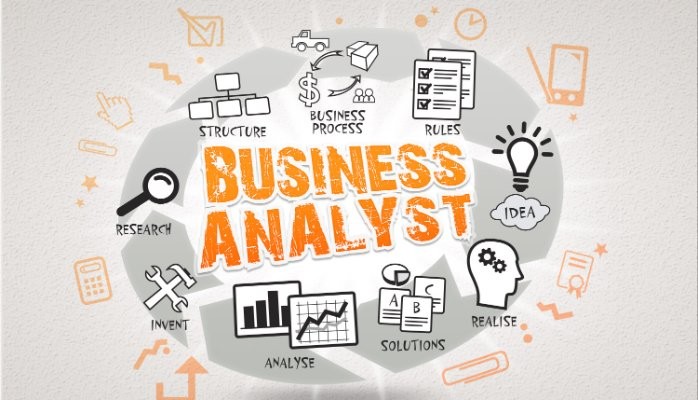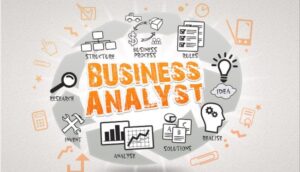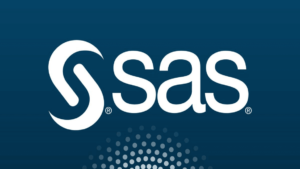Categories Business Analytics, PMP
BA cum PMP: A Comprehensive Business Analysis and Project Management Course

Welcome to Proximsoft’s BA cum PMP course—an essential journey through Business Analysis and Project Management. Expertly crafted by seasoned professionals, this program is designed to equip you with the skills and knowledge needed to succeed in the dynamic fields of business and project management. At Proximsoft, our commitment is to provide a balanced blend of theory and practical application, ensuring you become a proficient business analyst and project manager.
Why Learn BA cum PMP?
- Business Analysis and Project Management are integral skills in today’s corporate world, with high demand across various industries.
- Mastering Business Analysis enhances your ability to understand business needs, optimize processes, and contribute to organizational success.
- PMP certification is globally recognized and opens doors to lucrative project management roles, offering a competitive edge in the job market.
- The course covers a range of topics from business analysis fundamentals to project management methodologies, providing a holistic skill set.
| Mode of Training | Online live Interactive sessions |
| Duration of the Training | 6 weeks |
| Training duration per day | 60 – 90 min session |
| Software Access | Software will be installed/server access will be provided, whichever is possible |
| Training Materials | Soft copy of the material will be provided during the training |
| Training fee | Depends on the Requirement |
| Resume Preparation | Yes, at the end of the course based on the JD |
| Interview Preparation | Yes, by sharing some FAQ’s |
| Mock calls | Yes, 2 Technical Mock calls |
| Internship Project | Yes |
| Certification | Yes, at the end of the training |
| JOB Assistance | Yes |
| JOB Support | Yes |
| Weekdays | 6AM -2 PM EST & 6-11:30 PM EST (student can pick any 1 hr) |
| Weekends | 8 AM – 12 PM EST (student can pick any 2 hrs) |
What I will learn?
- The role and responsibilities of a Business Analyst
- Fundamental IT concepts
- Analysis techniques and tools, including UML and modeling tools
- Requirements gathering methods and JAD sessions
- Understanding Software Development Life Cycle (SDLC) and methodologies (RUP, Waterfall, Agile)
- Documentation essentials, including Business Requirement Document (BRD) and Functional Requirement Document (FRD)
- Overview of Project Management and the PMP/CAPM exam
- Project Management Framework, Scope Management, Time Management, Cost Management, Quality Management, Human Resources Management, Communication Management, Risk Management, and Procurement Management.
Course Content
Overview of Business Analysis
Who is a Business Analyst ?
Business Team / Technical Team
Roles and Responsibility of BA
Slangs / Jargons / Basic definition of IT
- Who is a stakeholder ?
- What is an NDA ?
- Who is a contractor Business Analyst ?
- What is Functionality ?
- What is kick off?
- What is go live
- What is Sign off ?
Analysis
- Who is an Actor ? Two real time exercises on actor
- How to identify an actor ?
- What is an Use Case ?
- How to identify the use case ? Two real time exercises on identifying the use cases
- Use Case Template Two real time exercises on Use Case Template
- Attributes / Components of Use Case Template ? Two real time exercises on Attributes of Use Case Template
UML
- What is UML ?
- Types of UML
- Context Diagram Real time example on Context Diagram
- Use Case Diagram Real time example on Use Case Diagram
- Activity Diagram Real time example on Activity Diagram
- Sequence Diagram Real time example on Sequence Diagram
Modeling tool
- Microsoft Visio overview
- Project 1 : Creating mock up ( Gmail )
- Project 2: Creating mock up ( Orkut )
- Omini Graffle
Requirement Gathering Method
- Existing Documentation
- Web Exploring
- Interviewing
- Questionnaire
JAD Session
- What is JAD session
- Protocols involved in JAD
- Role of BA in JAD session
- Participants in JAD session
Software Development Life Cycle
- Scope Identification
- Planning
- Analysis
- Design
- Development
- Testing
- Deployment / Installation
- User Training / User Accpetance
SDLC - Methodology
- Rational Unified Process ( RUP )
- Waterfall Methodology
- Agile Methodology
Documentation
- Overview of Business Requirement Document ( BRD )
- Contents of Business Requirement Document ( BRD )
- Walkthrough of BRD
- Overview of Functional Requirement Document ( FRD )
- Contents of Functional Requirement Document ( FRD )
- Walkthrough of FRD
- Overview of Project Management Plan
- Overview of Project Charter
- Overview of Actor Catalog
- Overview of User Manual
Overview of PMP / CAPM Exam
- Overview of PMI
- Overview of PMP / CAPM
- Comparison of PMP & CAPM
Project Management Framework
- What is a Project ?
- What is Operation ?
- What is a Portfolio ?
- What is Program ?
- What is Project Management Team ?
- Organization Structure Functional Organization Matrix Organization Projectized Organization
Scope Management
- Work Breakdown Structure (WBS )
- WBS Dictionary
- Baseline Cost Baseline Schedule Baseline Scope Baseline
Time Management
- Estimation Techniques
- One – Point Estimation Padding
- Three – Point Estimation Pert Formula Estimated Activity Duration Standard Deviation Range
- Analogous Estimation
Cost Management
- Life Cycle Costing
- Value Analysis
- Variable Cost
- Fixed Cost
- Direct Cost
- Indirect Cost
Quality Management
- What is Quality ?
- Gold Plating
- What is Kaizen
- Just-in-Time
- Quality Audit
- Sigma Standards 6 Sigma 5 Sigma 2 Sigma
Human Resources Management
- Role of Project Sponsor / Project Initiator
- Responsibility Assignment Matrix
- RACI Chart
- Staffing Management Plan
- Virtual Team
- Issue Log
- Arbitration
- Perquisites
- Fringe Benefits
Communication Management
- Stakeholder Register
- Types of Communication Formal Written Informal Written Formal Verbal Informal Verbal
- Communication Channel
Risk Management
- What is Risk
- What is Well Defined Risk ?
- What is Risk Response Owner ?
- What is Trigger ?
- What is Contingency Plan ?
- What is Secondary Risk ?
Procurement Management
- Who is a Buyer ?
- Who is Seller ?
- Centralized Procurement Department
- Advantage & Disadvantage Centralized Procurement Dept
- De – Centralized Procurement Department
- Advantage & Disadvantage Decentralized Procurement Dept
- Contracts Fixed Price Contracts Cost Reimbursable Contract Time & Material
Health Insurance
- What is Health Insurance?
- Components of Health Insurance
- Types of Health Insurance coverage
- Types of Health Insurance ( HMO, PPO, POS )
- Provider vs Payer & NPI
Claims Process
- Claims Process Flow
- Claims Submission
- Claims Adjudication Processing
- Encounters Submission
- Compliances Check
EDI Transaction - 1
- EDI Claims
- Remittance
- Edit & Validations
- Reports & Acknowledgements
EDI Transaction - 2
- ICD 9 vs ICD 10
- 4010 vs 5010
- DRG, CPT, HCPCS
- TR3, Companion Guide
Course level:All Levels
Course Duration: 30h
Requirements
- Basic understanding of IT concepts.
- Familiarity with business processes.
- Desire to learn and excel in Business Analysis and Project Management.
Talk to Our Career Advisor
FAQ'S
Absolutely, the course provides an in-depth overview of Business Requirement Document (BRD) and Functional Requirement Document (FRD), including walkthroughs and real-world examples.
Absolutely, the skills acquired in business analysis and project management are versatile and can be applied across various industries, providing a broad skill set for career growth.
The course details the involvement of a Business Analyst in JAD sessions, including protocols, participant roles, and the significance of a BA in collaborative development.
The course explores SDLC methodologies, such as Waterfall, Agile, and RUP, with practical applications and insights into their real-world use.



